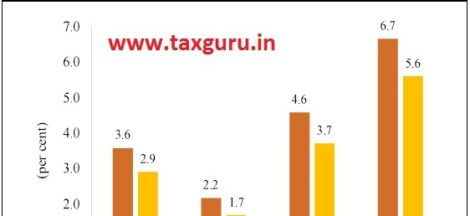NEW DELHI: The increase in average effective tariff rate imposed by the United States (US) on Indian exports could potentially impact India’s gross domestic product (GDP) growth by 0.1-0.3 percentage points, according to Goldman Sachs report on Wednesday.
This forecast considers various scenarios, including the US government’s planned reciprocal tariffs in early April and the price elasticity of US demand for Indian exports.
A potential GDP growth impact can be higher– 0.1-0.6 percentage point– in the case of the US imposing additional tariffs on all countries. This is because India’s domestic activity exposure to US final demand will be roughly twice as high– about 0.4 per cent of GDP– given the exposure to America through exports to other countries, Goldman Sachs said in the report.
Under the latest ‘Fair and Reciprocal Plan’, the US government is working on a reciprocal plan to match other countries’ tariffs, taxes and non-tariff barriers.
According to the report, there are three ways in which India can get impacted by reciprocal tariffs– country-level, product-level and reciprocity, including non-tariff barriers.
Implementing country-level reciprocity would be the most straightforward approach, involving increased tariffs on all US imports from India. Notably, India generally imposes higher effective tariff rates on US imports compared to the rates the US charges on Indian imports. India’s effective tariff rate on US imports stands at 9.4 per cent, while the US charges an effective tariff rate of 2.9 per cent on Indian imports. This creates a significant tariff differential of 6.5 percentage points.
“Product-level reciprocity– where the US matches India’s tariffs on each product imported from India. We estimate this may increase the average tariff differential by about 11.5pp, but would be more complicated with a longer implementation timeline,” it said, adding that implementing reciprocity, including non-tariff barriers, is the most complicated and could lead to even higher tariffs.
Despite these risks, India is hopeful that the US will “take care” of its concerns regarding the additional import levies on steel and aluminum and the proposed reciprocal tariffs during the bilateral trade agreement discussions that are expected to begin in the next few weeks, according to a senior government official.
India is also trying to decipher what will be the shape of the US’ proposed reciprocal tariff law, the related calculations, before drawing conclusions regarding its consistency with respect to the global trade norms under World Trade Organisation (WTO).
According to Citi Research analysts, Indian exporters are set to face uncertainty over reciprocal tariffs and have estimated potential losses at about $7 billion a year.
Sectors, including metals, chemicals and jewellery are at the highest risk, followed by sectors such as pharmaceuticals, automobiles and food items.
Source: Business Standard




 Economy On Recovery Path, Rate Cut To Boost Demand, Says RBI Report
Economy On Recovery Path, Rate Cut To Boost Demand, Says RBI Report 